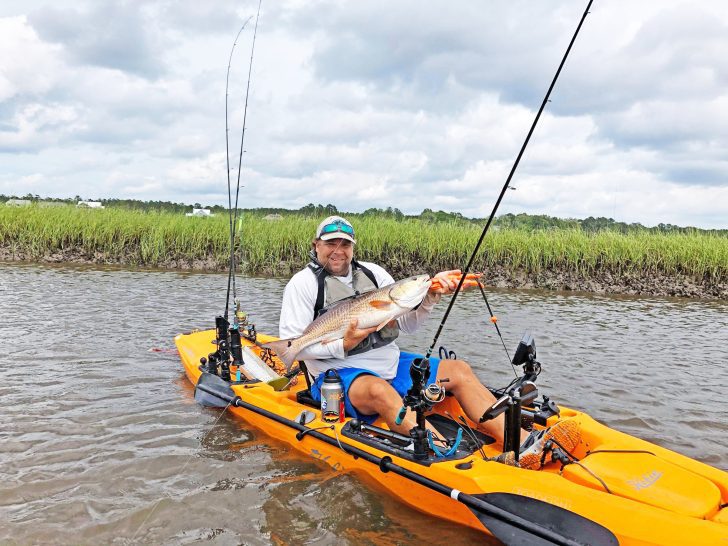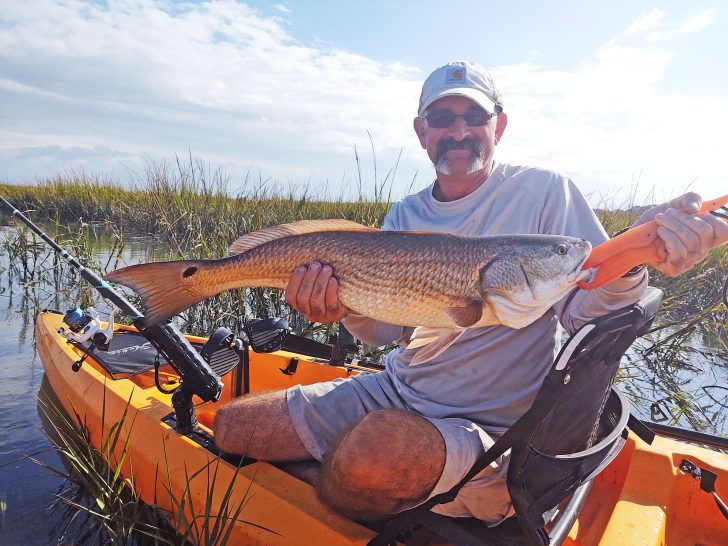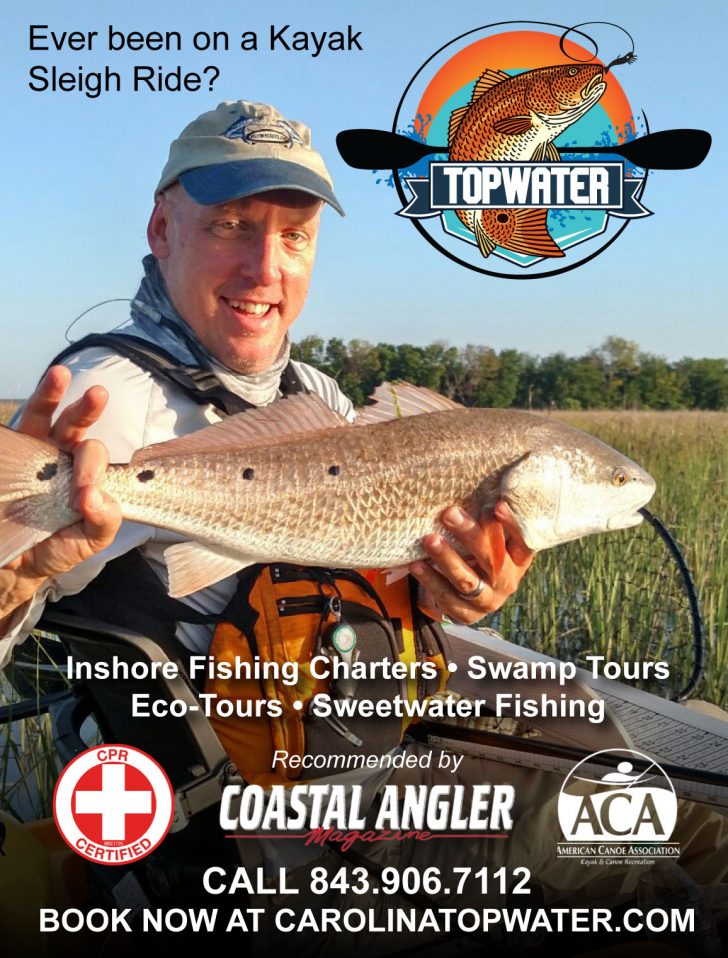Lowcountry Kayak Fishing | Chris Tweedy | September 2021
It’s typically the month of October that gets all the attention as the mature redfish begin the annual winter transition to deeper water.
However, kayak anglers flanking the Charleston coast can begin their hunt for big reds in September. Bigger resident fish moving offshore begin the process much sooner than it becomes obvious from the fishing reports and social media posts.
Your success is dictated by a few factors that we’ll break down this month that should help you get an early start to big redfish season.
We’ll focus our attention here on search and in this month’s video, we’ll break down a few of the rigs/leader setup you’ll want to employ, especially when considering the rod holders on most kayaks are much closer to the water than on your average bay boat.
Back on point, let’s consider a few basic premises to keep in mind over the next few months as you look for and attempt to stay with fish throughout the fall:
✓ If you’re not finding the big fish you’re looking for, you need to determine if you are ahead of or behind their movement and adjust. Ask questions, scout on Facebook, look for reports.
✓ The later into fall it gets, the more the bigger fish will be leaving the bays, harbors, and rivers and be found along the front beaches and inlets. Not all fish are triggered to move offshore at the same time. It’s more of a gradual, continuous process over several weeks as waves of baitfish leave the inshore waters.
✓Be careful with large redfish, take them out of the water as briefly as possible, wet your hands, and hold them horizontally and support their belly weight with your arm or hand.
✓ For targeting bigger redfish, my bait of choice is fresh cut bait and which type is determined by a few things such as current, proximity to the ocean, and what I’m catching in the cast net.
Mullet and menhaden are my go-to 90% of the time. Both are big, stinky baits that are like candy to bull reds and reasonably easy to keep fresh.
Keeping these ever in mind, now we dive in on where to look. Much of making your search work is going to come down to your own ability to determine if there are fish around.
A few areas are going to stand out in terms of where to begin and end your search, but it’s what happens in between those points that can make the early fall bite amazing.
Given that the fish will start up in the marsh and tidal rivers at points you likely found them on and off all summer, your game plan needs t start determining what their likely path to the ocean is.
For the rivers surrounding Charleston, there’s little option but for fish to travel downstream into the harbor. Way up these rivers, mullet are going to be the dominant forage and finding bait on the move is going to be the best way to hone in on some feeding fish.
In a system like this, you’re likely to find the fish shallow, chasing schools of bait and shrimp in shallow water like we’ve talked about most of the summer.

___________________________________
If you’re up the creeks and rivers successfully netting finger size and larger mullet and then it’s suddenly gone from the area, it’s essential to realize the bait is gone, taking the last few waves of fish closer to the ocean.
At this point your effort is better spent trying to figure out where to take your next shot. If you’re on a river, move to the next closest landings to downtown and see what your cast net tells you.
Beyond Charleston Harbor, in the marshes and back bays that dot the coast, the fish will follow the same pattern, however other forage may mix in such as shrimp in the tidal creeks and menhaden in the deeper and bigger water.
Unlike the river system, these fish have a much shorter distance to travel to the ocean, so they may be among the first fish to hit the front beaches.
Your target areas for marshes and back bays is going to be likely funnel points as well as places fish can gather/rest.
The backside barrier islands (inhabited or not) especially the ends, large main creeks with access to deep water, and bridges.
Some of these locations hold huge fish but come with some dangers in the form of strong currents and long distances and are not necessarily a trip for novice saltwater kayakers.
In situations like these, I’m looking for signs of birds diving on bait, sighting big schools of feeding fish (not only redfish, but sharks, mullet, tarpon) and usually wanting to throw menhaden.

_____________________________________
Eventually, the bait will head for the beach and slowly move beyond our reach until next year. However, by following these tips, you should be able to wear yourself out chasing redfish until they follow the bait.
If you do find yourself struggling, reach out and lets see if a little more help can get you going. We’re heading fast into the best weather and bites of the year, let’s get on it!
Reach out to me on the Coastal Angler Charleston Facebook page and share what you’ve learned in terms of adapting this summer and be sure to look for my video reports online or drop any questions you might have about your own experiences.
You can also hit me up if you need any help or have any questions!
Thanks for reading and tight lines,
Chris Tweedy, Owner/Operator
Topwater Kayak Charters
For a kayak fishing charter you will never forget give us a call at 843-906-7112 or check us out on Facebook or at carolinatopwater.com.
You may also enjoy reading:
Kayak Puddle Jumping – Guide To Fishing Great Ponds & Lakes In The Lowcountry
Kayak Fishing Gear: The Basics
Are You Ready to Slay Dinosaurs? Fishing for Bowfin
Tournament Time – Five Lures To Cover All The Bass Bases






